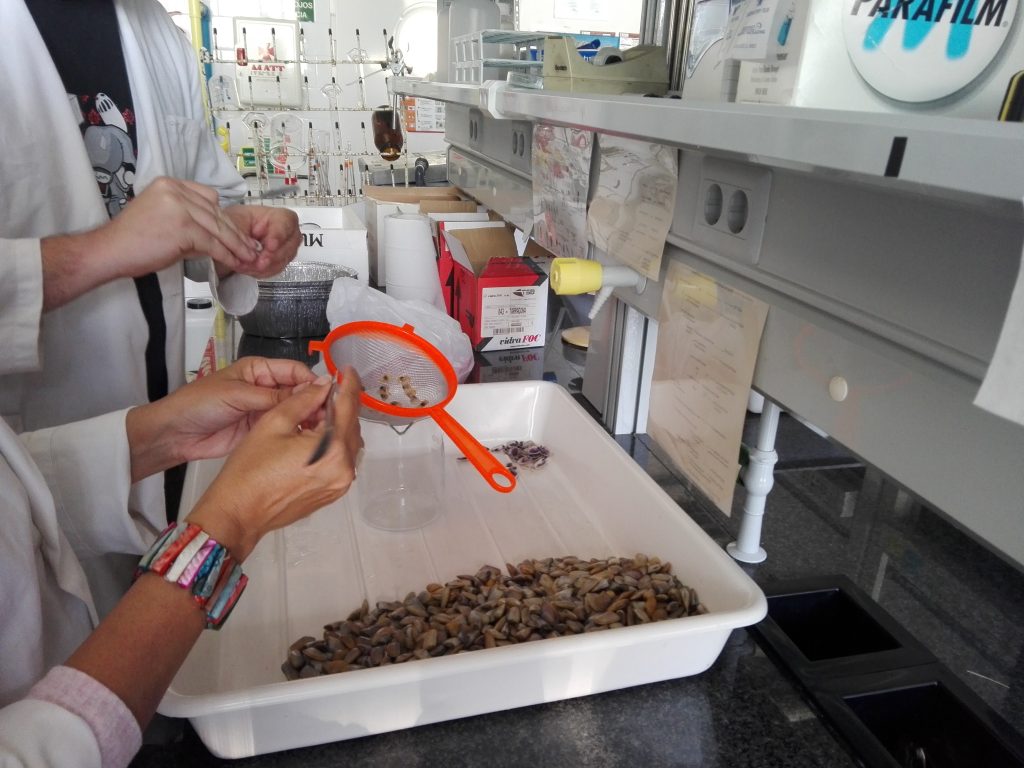29/06/2022
The adult population consumes an average of about 8,100 microplastics every year in molluscs
A study by the URV research group TecnAtox has detected 1,460 microplastics en 2,300 molluscs collected by producers along the Catalan coastline. From these data, they have calculated that the mean annual consumption of microplastics is about 8,100. Oysters and mussels contain the most microplastics, mainly fibres

A study by the URV research group TecnAtox has detected 1,460 microplastics en 2,300 molluscs collected by producers along the Catalan coastline. From these data, they have calculated that the mean annual consumption of microplastics is about 8,100. Oysters and mussels contain the most microplastics, mainly fibres
Microplastics are fragments of synthetic polymer materials between 0.02 and 5 mm in length and can be found in the environment, especially in the sea. Because of their small size, they are accessible to organisms such as molluscs that have active filter-feeding strategies and live attached to rocks or semi-buried in sediments.
In this study, the URV research team determined the concentration, morphology and composition of microplastics in mollusc species consumed on the Catalan coast. More than 2,300 individual molluscs were analysed and 1,460 microplastics were extracted. The molluscs studied were mussels, oysters, sea snails, cockles, razor clams and wedge clams that had been collected from producers along the Catalan coast.
Oysters and mussels showed the highest concentration of microplastics per sample, with average individual levels of 23 and 19 microplastics, respectively. The other species analysed showed average levels of 0.5, 5, 10 and 10 microplastics per sample, for wedge clams, sea snails, razor clams and cockles, respectively.
As far as their morphology is concerned, microplastics were mostly in the form of fibres (74%) followed by fragments and films (13% each). Two polyethylene pellets (spheres that are the raw material used to make plastic objects) of more than 1 millimetre in diameter were also found in two samples of mussels. Overall, the most abundant microplastics were polyester and synthetic cellulose fibres from clothing, measuring less than 1 mm. Fragments were mostly made of polyethylene, one of the most widely produced plastic materials in the world.

From these levels it has been calculated that the average annual consumption of microplastics for the general adult population is about 8,100 microplastics per year with an annual consumption of 19,400 microplastics for those people who eat a lot of this food. The present study suggests that the consumption of molluscs is an important route of exposure for the Catalan population.
Although further study is required on the health effects of microplastics, some studies suggest that they may be associated with inflammatory diseases of the digestive tract. “Furthermore, these microplastics contain chemicals and metals such as additives and potentially toxic environmental pollutants that can migrate from the plastic once ingested” says Joaquim Rovira, a member of the URV-IISPV’s TecnAtox research group (Centre of Environmental Food and Toxicological Technology).
Bibliographic reference: Nora Expósito, Joaquim Rovira, Jordi Sierra, Gemma Gimenez, José L. Domingo, Marta Schuhmacher, Levels of microplastics and their characteristics in molluscs from North-West Mediterranean Sea: Human intake. Marine Pollution Bulletin, Volume 181,2022, 113843, https://doi.org/10.1016/j.marpolbul.2022.113843. (open access).
